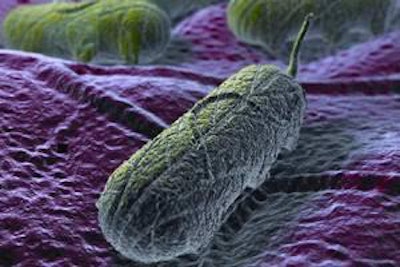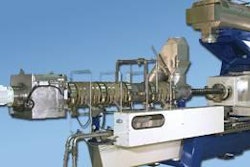
Whether you are an ingredient supplier or a finished petfood manufacturer, evaluation at each and every stop along your process, especially in the form of a biomap, is key in the elimination of Salmonella. Salmonella is often considered an indicator organism for post lethality contamination in pet products but I would encourage you to look at all of your processes and not just the steps that are after lethality for Salmonella control.
Raw supplies and incoming goods
Many processors receive raw materials off of Certificates of Analysis (COAs) that most likely indicate that the material has been tested and found to be Salmonella negative. The certificates typically do not inform processors on the methodology used for analysis, the number of samples taken or where in the process the samples were taken. All of these variables will affect whether or not that COA is representative of the material you are bringing into your plant. The transport mode/vehicle might also affect the product (e.g. the product may have been shipped in bulk and has contacted the shipping vehicle which may have Salmonella present on it prior to loading).
COAs have their place but they do not take the place of being an educated buyer/receiver of ingredients.
- You should know your suppliers.
- Visit their plants and ask questions and understand their process.
- You should see and understand how your ingredients are handled as they are transported to your plant.
- You should have the kind of relationship with your suppliers that you can share information and educate them on your needs.
Processing
Several factors influence the growth and proliferation of Salmonella (time, temperature, nutrient availability, pH, water activity (Aw) and other microbial interactions) in your processing environment. The more of these components you can make inhospitable to Salmonella throughout your process the less proliferation of Salmonella you will have.
The goal is to reduce the amount of Salmonella at multiple steps in your process (often termed a multiple hurdle approach) so that you have as few as possible viable cells going into your kill step.
The kill step
Most processors trust their kill step to eliminate Salmonella entirely but it is important to know what log reduction you get through your kill step. For example: If you are getting a 4 log reduction through your lethality step, any raw materials that contain over 10,000 cfu/gm of Salmonella will likely produce a finished petfood product with viable cells of Salmonella .
Comprehensive studies should be done on your lethality step that provide an accurate expected reduction. By looking at all of your incoming material and your formulations you should be able to calculate the odds of having viable Salmonella survive your kill step.
Post-lethality contamination
Protecting the product prior to packaging and distribution is also key. Assuming that you have validated your lethality step and that you are confident that your finished material is Salmonella negative, your ultimate goal now is to not contaminate the product.
As a processor you should know your opportunities for contamination (team member handling issues, air flows from raw areas, roof leaks, contaminated shipping containers, etc.).
Do you know if you have Salmonella in your environment post-lethality? Have you ever tested your environment for Salmonella ? Although Salmonella is not generally known as an aggressive environmental contaminant it can be if given the right conditions. Environmental swabs can be tested for the presence of Salmonella and the results will help you determine your risk for post-lethality contamination.
An environmental sampling plan might include swabbing non product contact items such as drains, air handling units, on/off switches and air hoses; just as the name 'non-contact' indicates these areas do not come in contact with the product. A positive result most likely does not implicate product but will tell you if you have Salmonella present in your post-lethality processing area and that information can be quite valuable in helping you determine what procedures need to be taken to either eliminate it from your environment or prevent it from directly contaminating your finished material.
Testing
When reviewing Salmonella results always remember that pathogen testing such as Salmonella is done after enrichment. In layman's terms, this means that the laboratory has taken your sample/swab and assumed that if Salmonella is present that it would need to be resuscitated. This means they put the sample in a media with optimum growth conditions (food, water, ph, temperature) for Salmonella to revive and replicate. If one viable cell was in your sample it will most likely be replicated to almost 1 million cells by the time the sample is tested for the presence/absence of Salmonella .
It is always a good idea to speak with the microbiologists on staff at the laboratory that you are using for your testing. You need to educate them on the materials that you are asking them to test.
Take time and discuss - Go over with them items such as the pH of your products, use of inhibitors in your formulation, whether you expect the background counts (non Salmonella) to be high, and how your samples are handled (could they have ever been abused e.g. frozen in transport?).
Origin of sample - Make sure they understand exactly what the sample is from. Although this may sound obvious, remember the microbiologist is only looking at 25-50grams of your product and it may be difficult to determine what it is from. The FDA Bacteriological Analytical Manual as well as the USDA-FSIS Microbiological Laboratory Guidebook has Salmonella test protocols that differ slightly depending on the product intended to be tested.
Biomapping
Each plant/process/product is unique. It is critical to determine your micro loads at each step in the process. You can determine this by doing what is referred to as a biomap of your facility. This is done by taking samples at various locations throughout the process and analyzing them for the amount of bacteria present. If you expect your Salmonella incidence to be quite low or you would rather not test for Salmonella due to the expense another indicator test or organism may work better such as Aerobic Plate Count (APC) testing or possibly even E. coli or coliforms. When you sequentially plot the results of your biomap on a chart you may discover hot spots as well as processes that decrease your micro load (Figure 1).
If any process is considered a control step you may want to validate the reduction using the same methodology (test the load prior and test the load after the intervention as in Figure 2.
Every step in your process, not just the kill step, is important in controlling Salmonella . I encourage you to perform a biomap of your facility. The results should help you determine multiple places to put control measures in place for Salmonella .














